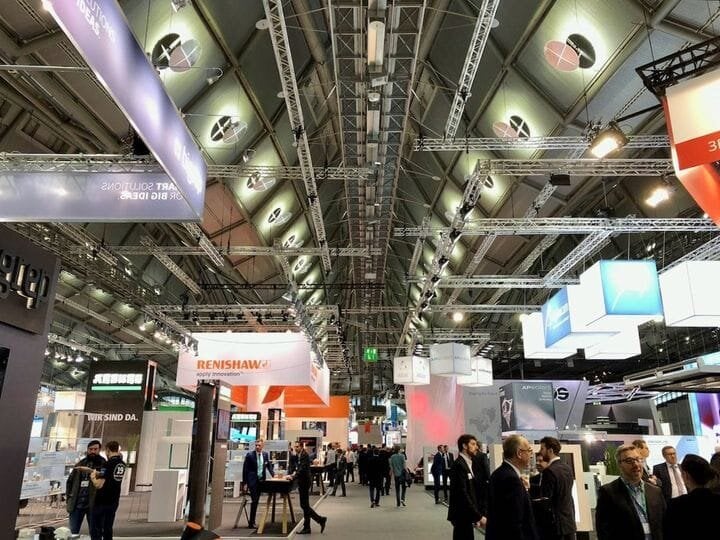![How many types of 3D printer emissions are you breathing at a 3D print trade show? [Source: Fabbaloo]](https://fabbaloo.com/wp-content/uploads/2020/05/formnextov-1_result_img_5eb08c6b6d2d3.jpg)
I’ve been speaking with Alex McIntosh of KORA about 3D printer emissions, and found out something quite startling.
KORA is a UK-based company that provides safety products for 3D printing, most notably a series of enclosures that isolate working 3D printers from prying fingers, but more importantly capture emissions generated by printing operations.
3D Printer Emissions
Normally such emissions would be released into the surrounding air. That’s why we always recommend the use of proper external air ventilation or a filtration solution such as provided by KORA or other vendors.
The nature of the emissions is two-fold. First, there is the problem of VOCs, or “volatile organic compounds”. These are chemicals emitted by heating or evaporation of 3D print materials, and many are considered carcinogens. You definitely do not want to breathe these molecules, but they can be captured in a sufficiently robust activated carbon filter. UL2904 describes how to test for such materials.
The second type of emission is particles. Like smoke, invisible nanoparticles are also generated by the heat of 3D printing, and the amount and size of nanoparticles varies depending on the material, heat level and type of 3D printer involved. While many such particles can be captured by HEPA filters, some particles are of such a small size they can easily pass through standard HEPA filters.
These emissions have been part of 3D printing for many years, and while a few vendors account for emissions, particularly those offering industrial equipment that must pass safety certifications for factory use, most simply ignore the issue entirely.
It’s as if you’d never encounter these emissions.
But in fact, you do, and there’s a way to prove it.
3D Printer Emissions at Trade Shows
In my discussions with KORA, it turns out they have a sophisticated nanoparticle detector that can measure the parts per million present in ambient air.
As an experiment, KORA took their detector to the center of the show floor at TCT Show 2019 in September to see what they could find. Surprisingly, they found a rather large particulate count of 18,000 ppcm! Why? It’s because the room held a large number of unfiltered 3D printers at vendor exhibits, many of which were operating – and generating emissions. If the hall’s HVAC system was sufficiently powerful, it might have swept the particles out, but apparently it was not.
KORA did a similar experiment at Formnext 2019, and the results were somewhat different. Their informal particle measurement found:
-
Hall 11.0 ~1600 ppcm
-
Hall 11.1 ~3,800 to 6,000 ppcm
-
Hall 12 ~5,000 to 7,000 ppcm
KORA suspects that the lower value in Hall 11.0 was due to the presence of many industrial-sized 3D printers, which would include sophisticated filtration systems of their own. KORA proposes these advanced filtration systems could actually be partially cleaning the air in that hall in addition to the hall’s own HVAC equipment.
What this experiment shows is that even at a trade show you will be subjected to 3D printer emissions if machines are running. This makes sense: any unfiltered equipment will generate emissions.
The halls at these trade shows are truly enormous, with plenty of space to disperse emissions, as well as industrial-sized HVAC systems to keep the air fresh and clean.
Office 3D Printer Emissions
Now imagine the same types of 3D printer equipment operating in your far smaller workshop, office or even home, where there is no equivalent HVAC system.
If you don’t know how much is being emitted by your 3D printer, it turns out that Kora offer free filament printer testing at their laboratory in Leeds, UK during January 2020, if that is convenient for you. Apparently, this service is normally charged at £489 (US$645). If you’re interested, feel free to contact Alex at alex.mcintosh@kora.co.uk.
What’s your particle count? And what are you going to do about it?
Via KORA

